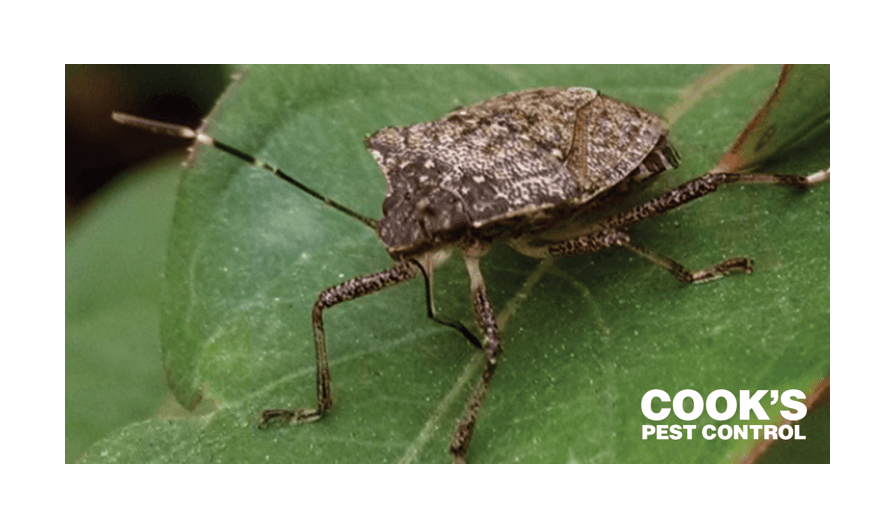Overwinterers

When winter approaches, some adult insects avoid a cold death by migrating or hibernating. One of the best-known insect migrators is the monarch butterfly. While we normally think of bears and bats as hibernating, insects do it too, but we call it overwintering. When insects overwinter, they go into diapause and go dormant. To prevent ice formation in their cells (which would kill them), some of these insects have antifreeze chemicals in their blood, while others empty their guts of all excess water so that there’s less in them that can freeze into dangerous ice crystals.
Most insects overwinter under rocks, fallen trees, in piles of leaves, in animal burrows, under tree bark, and other natural places. Overwintering insects become an issue when they decide to overwinter in homes. While many hide out under porches, in closed patio umbrellas, behind siding, and in storage sheds, others make their way into attics, basements, walls, and windows. When these insects warm up, they come out of diapause and wander around, as they mistake the rise in temperature for the spring season.
So, Which Insects Stick Around for the Winter Months?
There are several insects which can become pests because of their overwintering habits. Among these are the multi-colored Asian lady beetle, the brown marmorated stink bug, and the kudzu bug.
Multi-colored Asian lady beetle
Asian lady beetles come in an array of colors and patterns but most often will be red or orange with black spots. Most will have a distinctive M- or W-shaped black marking against a white background right behind the head. The M- or W-shaped marking can vary considerably and depends on how “heavily spotted” the beetle is. Beetles with no spots or small spots have a smaller marking (four spots), while beetles with large spots will have a larger marking (solid trapezoid).
The bright colors of the Asian lady beetle are a warning to birds and other predators advertises that they taste bad. Should the warning fail, these beetles can exude a yellow-brown liquid from their leg joints, a process called reflex bleeding, which causes most animals to spit them out rather than eat them. As many homeowners can attest, this habit of reflex bleeding can stain surfaces and contaminate food and drinks.
Asian lady beetles were released in the United States as far back as 1916 to control aphids, a small but destructive sap-sucking insect. Unfortunately, Asian lady beetles have become pests themselves. They annoy homeowners with their presence and also feed on and contaminate ripe fruits, such as grapes used for wine-making. Studies show that even a casual wine drinker could detect the off-taste of one or two beetles processed in about 30 pounds of grapes.
Brown marmorated stink bug
Brown marmorated stink bugs are mottled brown with antennae that are brown with alternating white bands. Several other species look similar, but the banded antennae are distinctive of this species. As with most stink bugs, these bugs emit a foul odor when threatened. Obvious threats, like being injured or squeezed, will cause the bug to release its pungent chemical. Even attempting to move the bug may be enough to trigger the response. The odor has been described as smelling somewhat like cilantro.
These bugs were accidentally introduced into the United States around the early 2000s and have become serious agricultural pests, causing pitting and scarring of fruits.
Kudzu bug
Kudzu bugs are olive green with numerous black speckles. They have an angular body shape and are widest near their back end.
They are highly attracted to white buildings and white vehicles.
Like stink bugs, they can smell rather unpleasant. But unlike stink bugs, the foul liquid which accompanies the odor can burn skin and cause welts.
As their name suggests, these bugs are known to feed on kudzu, a fast-growing weed which kills trees and shrubs by growing over them and shading them out. When kudzu bugs are actually feeding on kudzu, they do a good job of keeping kudzu under control. Unfortunately, they have also developed a taste for plants that we like to grow and eat, including green beans and soybeans. They were found in the United States in 2009 and have been spreading across the southeast ever since.
What can you do?
These insects can invade homes by the dozens or thousands, so what can you do to stop them?
The severity of an invasion depends on several factors, but one of them is how “tight” your home is. When it comes to dealing with overwintering insects, the best thing you can do is seal up your home as best you can. Caulking cracks, patching holes, screening vents, and keeping doors shut will go a long way in keeping these invaders – as well as other insects and critters – outside where they belong.
